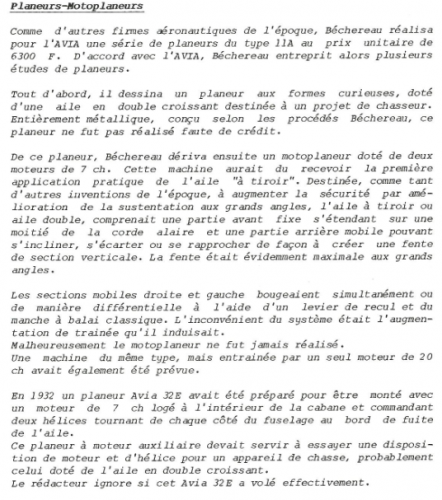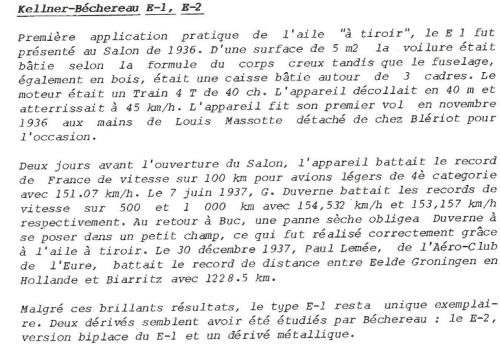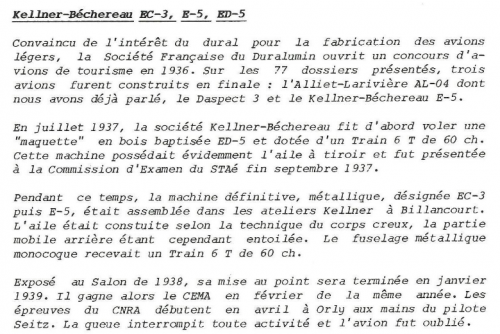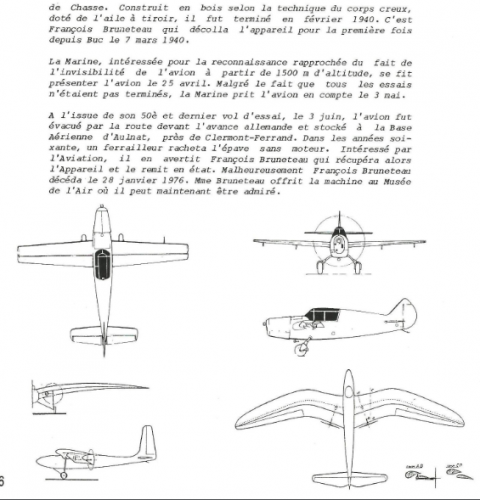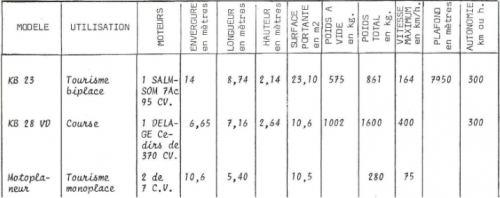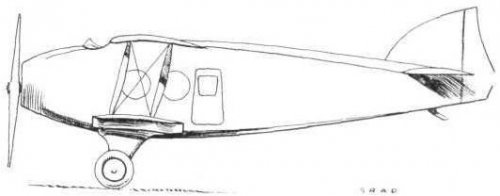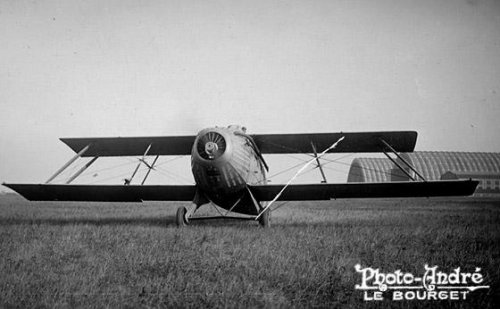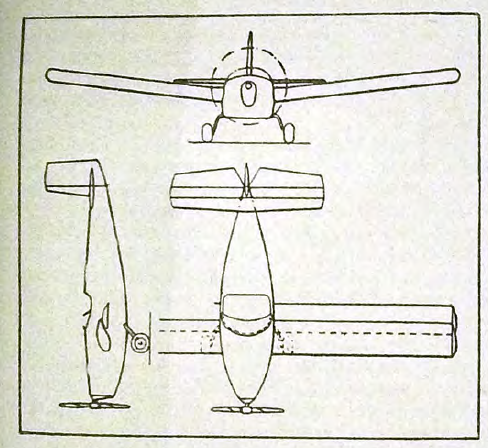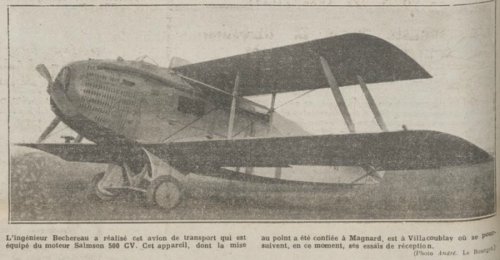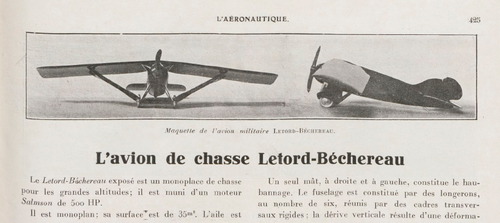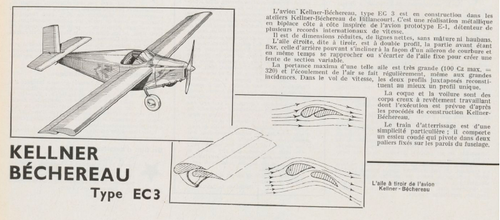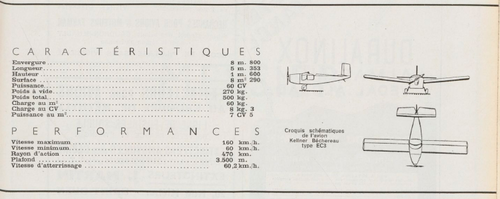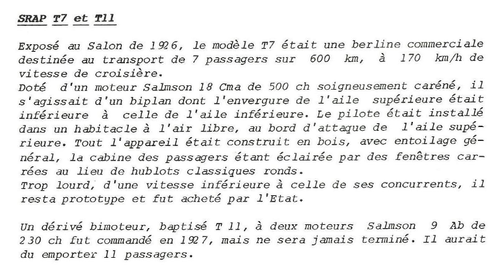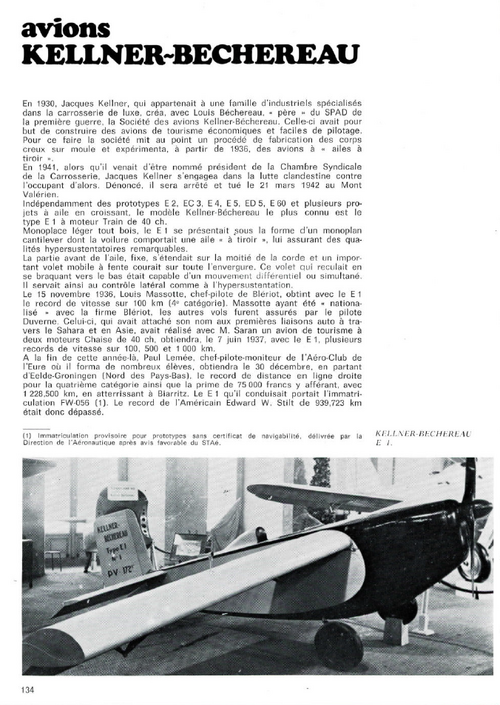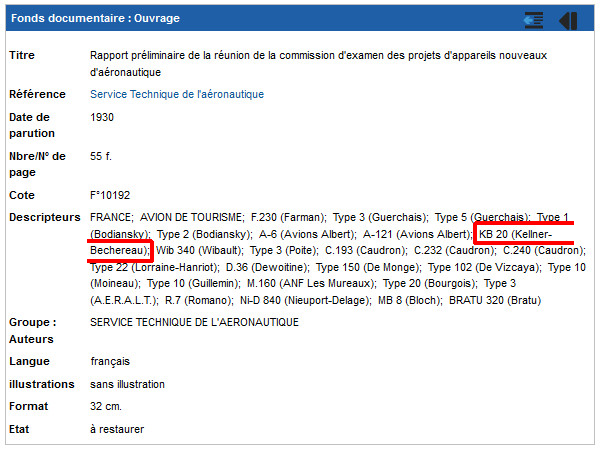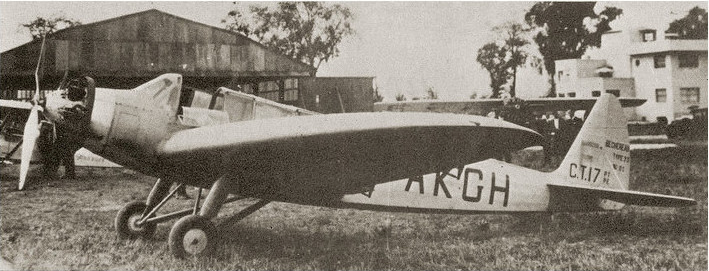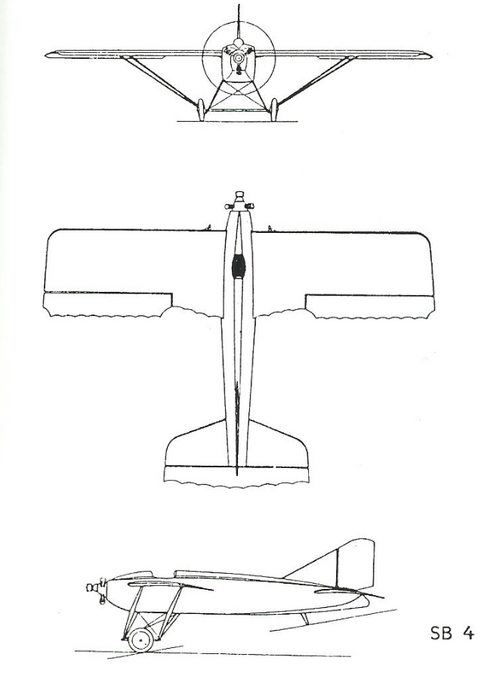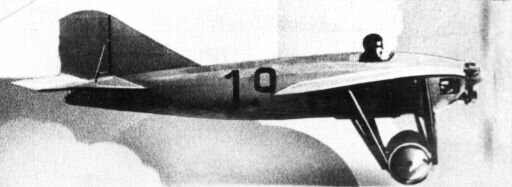- Joined
- 25 July 2007
- Messages
- 4,299
- Reaction score
- 4,198
Louis Béchereau Aircraft Designations
Louis Béchereau (1880-1970) is best-known for aircraft designed for Armand Deperdussin (with Clément Ader's Société de Construction d'Appareils Aériens) and, later, a series of WWI SPAD fighter designs.
My purpose here is not to list all of Louis Béchereau's Deperdussin, SPAD, or Bernard designs. Instead, I'm trying to list all aircraft designations bearing Béchereau's name. These include: S.A.B., Letord-Béchereau, Buscaylet-Béchereau, Salmson-Béchereau, and Kellner-Béchereau.
An exception to my self-imposed rule is S.R.A.P. (Société pour la Réalisation d'Avions Prototypes) which I include for completeness. Does anyone have any other aircraft designs bearing Louis Béchereau's name?
__________________________________________________
Béchereau's career went something like as follows:
1902: Joined Clément Ader at Bezons (automotive work)
1903: Hired by Société anonyme de construction d'appareils aériens
-- SACAA: Formed by Clément Ader's son-in-law, George Manthe
1909: Designer, SACAA (aka 'Avionnerie de Levallois')
1909: Assistant Designer, Société A. Deperdussin et de Feure
1910: Technical Director, Société de Production des Aéroplanes Deperdussin
1914: Technical Director, Société Pour l'Aviation et ses Dérivés*
-- * SPAD renamed after Blériot Aéronautique take-over (Aug 1914)
1918: André Herbemont succeeds Béchereau as SPAD Technical Director
1918: Joins Avions Bernard under Technical Director Jean Hubert
1918: Société et Ateliers Béchereau, [1] aka'Société des trois B'
-- S.A.B. = Béchereau, Adolphe Bernard, and Marc Birkigt [2]
1918: Béchereau also working for Établissements Adolphe Bernard
1920: Société et Ateliers Béchereau goes into liquidation
1921: Designs LB-2 for Établissements Letord (Émile-Louis Letord)
-- LB-2 dev. continued as 1924 Buscaylet-Béchereau BB-2
1922: Bernard becomes SIMB (Société industrielle des métaux et du bois)
1923: Chief of airframe design staff for Salmson
-- Société des Moteurs Salmson
1926: Designs for Société pour la Réalisation d'Avions Prototypes
1927: SIMB becomes Société des Avions Bernard ('Avions Bernard')
-- No known Béchereau designations for any Bernard aircraft
1927: Béchereau Technical Director of Société des Avions Bernard
-- Former Technical Director, Jean Hubert, killed in auto accident
1932: Formed Avions Kellner-Béchereau with Georges Kellner*
-- * Kellner was an automotive coach-builder (carrossier)
1942: Avions Kellner-Béchereau merged with Morane-Saulnier
-- Béchereau becomes Director of Morane-Saulnier (until 1950)
_______________________________
[1] The name is unconfirmed. To confuse matters further, The Aeroplane (07 Jan 1920) lists the acronym as standing for Société des Appareils Béchereau, Société des Aéroplanes Béchereau, or Société des Avions Béchereau ???
[2] Louis Blériot is sometimes linked with S.A.B. This seems unlikely since Blériot Aéronautique and SPAD were connected, merging in 1920.
_______________________________
Louis Béchereau (1880-1970) is best-known for aircraft designed for Armand Deperdussin (with Clément Ader's Société de Construction d'Appareils Aériens) and, later, a series of WWI SPAD fighter designs.
My purpose here is not to list all of Louis Béchereau's Deperdussin, SPAD, or Bernard designs. Instead, I'm trying to list all aircraft designations bearing Béchereau's name. These include: S.A.B., Letord-Béchereau, Buscaylet-Béchereau, Salmson-Béchereau, and Kellner-Béchereau.
An exception to my self-imposed rule is S.R.A.P. (Société pour la Réalisation d'Avions Prototypes) which I include for completeness. Does anyone have any other aircraft designs bearing Louis Béchereau's name?
__________________________________________________
Béchereau's career went something like as follows:
1902: Joined Clément Ader at Bezons (automotive work)
1903: Hired by Société anonyme de construction d'appareils aériens
-- SACAA: Formed by Clément Ader's son-in-law, George Manthe
1909: Designer, SACAA (aka 'Avionnerie de Levallois')
1909: Assistant Designer, Société A. Deperdussin et de Feure
1910: Technical Director, Société de Production des Aéroplanes Deperdussin
1914: Technical Director, Société Pour l'Aviation et ses Dérivés*
-- * SPAD renamed after Blériot Aéronautique take-over (Aug 1914)
1918: André Herbemont succeeds Béchereau as SPAD Technical Director
1918: Joins Avions Bernard under Technical Director Jean Hubert
1918: Société et Ateliers Béchereau, [1] aka'Société des trois B'
-- S.A.B. = Béchereau, Adolphe Bernard, and Marc Birkigt [2]
1918: Béchereau also working for Établissements Adolphe Bernard
1920: Société et Ateliers Béchereau goes into liquidation
1921: Designs LB-2 for Établissements Letord (Émile-Louis Letord)
-- LB-2 dev. continued as 1924 Buscaylet-Béchereau BB-2
1922: Bernard becomes SIMB (Société industrielle des métaux et du bois)
1923: Chief of airframe design staff for Salmson
-- Société des Moteurs Salmson
1926: Designs for Société pour la Réalisation d'Avions Prototypes
1927: SIMB becomes Société des Avions Bernard ('Avions Bernard')
-- No known Béchereau designations for any Bernard aircraft
1927: Béchereau Technical Director of Société des Avions Bernard
-- Former Technical Director, Jean Hubert, killed in auto accident
1932: Formed Avions Kellner-Béchereau with Georges Kellner*
-- * Kellner was an automotive coach-builder (carrossier)
1942: Avions Kellner-Béchereau merged with Morane-Saulnier
-- Béchereau becomes Director of Morane-Saulnier (until 1950)
_______________________________
[1] The name is unconfirmed. To confuse matters further, The Aeroplane (07 Jan 1920) lists the acronym as standing for Société des Appareils Béchereau, Société des Aéroplanes Béchereau, or Société des Avions Béchereau ???
[2] Louis Blériot is sometimes linked with S.A.B. This seems unlikely since Blériot Aéronautique and SPAD were connected, merging in 1920.
_______________________________

